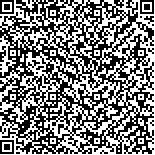朱清,陈艳,胡楠,等.神经干细胞联合神经生长因子纳米粒海马移植对APP/PS1转基因小鼠行为学及海马突触素的影响[J].中华物理医学与康复杂志,2020,42(8):673-678
扫码阅读全文

|
| 神经干细胞联合神经生长因子纳米粒海马移植对APP/PS1转基因小鼠行为学及海马突触素的影响 |
|
| |
| DOI:10.3760/cma.j.issn.0254-1424.2020.08.001 |
| 中文关键词: 阿尔茨海默病 神经干细胞 移植 突触素 |
| 英文关键词: Alzheimer′s disease Neural stem cells Transplantation Synaptophysin |
| 基金项目:广东省科技发展专项基金(2017A030313907) |
|
| 摘要点击次数: 5564 |
| 全文下载次数: 6285 |
| 中文摘要: |
| 目的 观察神经干细胞(NSCs)联合神经生长因子(NGF)纳米粒海马移植对APP/PS1双转基因小鼠行为学及海马突触素(SYP)的影响。 方法 体外分离培养增强型绿色荧光蛋白(EGFP)转基因小鼠胎脑来源NSCs,24只12月龄雄性APP/PS1双转基因AD小鼠随机分入NSCs联合NGF纳米粒移植组(NSCs+NGF-NP组)、NSCs移植组(NSCs组)和AD对照组(AD组),每组8只,另选8只同月龄雄性野生型小鼠作为健康对照组(WT组)。NSCs+NGF-NP组和NSCs组分别行NSCs联合NGF纳米粒移植和NSCs移植,其余两组均行等量磷酸盐缓冲液(PBS)注射,移植部位为双侧海马区。移植4周后,采用Morris水迷宫检测4组小鼠学习记忆功能,用免疫荧光组化法检测移植细胞的迁移与分化,Western blot检测SYP蛋白水平。 结果 体外悬浮培养的神经球表达EGFP阳性,免疫荧光显示NSCs特异性标志物Nestin阳性。移植4周后,可见EGFP示踪的NSCs在海马注射移植部位存活并向胼胝体,海马深部和齿状回迁移,可分化为双皮质素(DCX)阳性神经元及胶质纤维酸性蛋白(GFAP)阳性胶质细胞,并可见NSCs+NGF-NP组存活细胞数量较多,突起较长,穿越海马颗粒层。海马突触相关蛋白SYP检测显示, WT组、NSCs组和NSCs+NGF-NP组海马SYP蛋白水平较AD组明显增高(P<0.05),NSCs+NGF-NP组SYP蛋白水平明显高于NSCs组(P<0.05),且与WT组比较,差异无统计学意义(P>0.05)。水迷宫检测显示,与AD组比较,WT组、NSCs组和NSCs+NGF-NP组在平台象限停留时间及穿越平台次数均增加(P<0.05),NSCs+NGF-NP组穿越平台的次数大于NSCs组(P<0.05),且与WT组比较,差异无统计学意义(P>0.05)。 结论 NSCs联合NGF纳米粒海马移植治疗可能促进移植细胞在体内存活及成熟,增加海马突触,从而改善AD小鼠学习记忆功能。 |
| 英文摘要: |
| Objective To observe the effect of transplanting neural stem cells (NSCs) and nerve growth factor (NGF) nanoparticles on hippocampal synaptophysin (SYN) levels in APP/PS1 double-transgenic mice and on their behavior. Methods NSCs from the brains of transgenic mouse fetuses were cultured in vitro. Twenty-four 12-month-old male APP/PS1 mice with Alzhaimer′s disease (AD ) were randomly divided into an NSC combined with NGF transplantation group (NSCs+NGF-NP group), an NSC transplantation group (NSCs group) and an AD control group (AD group), each of 8. Another 8 healthy male counterparts formed a normal control group (WT group). The rats in the NSCs+NGF-NP and NSCs groups had NSCs combined with NGF nanoparticles or NSCs alone injected into their brains, while the bilateral hippocampi of the other two groups were injected with the same volume of phosphate buffer. Four weeks later the Morris water maze test was used to quantify the rats′ learning and memory functioning. The migration and differentiation of the transplanted cells were measured using fluorescence immunohistochemistry, while the level of synaptophysin protein in the hippocampus was detected using western blotting. Results Neurospheres cultured in vitro showed positive expression of enhanced green fluorescent protein(EGFP) and nestin, which are specific markers of neural stem cells. Four weeks after the transplantation, cells traced using EGFP had survived and migrated to the corpus callosum and deep into the hippocampus and dentate gyrus. Transplanted cells had differentiated into DCX-positive neurons and GFAP-positive glial cells. The samples from the NSCs+NGF-NP group showed a larger number of viable cells with longer protrusions, and some had crossed the hippocampal granular layer. The average synaptophysin levels in the WT, NSCs and NSCs+NGF-NP groups were significantly higher than that of the AD group. The average synaptophysin level of the NSCs+NGF-NP group was significantly higher than in the NSCs group but not significantly different from the WT group′s average. The Morris water maze results showed that compared with the AD group the time in the platform quadrant and the platform crossing times increased significantly in the WT, NSCs and NSCs+NGF-NP groups. The average platform crossing time of the NSCs+NGF-NP group was greater than that of the NSCs group but not significantly different from the WT group′s average. Conclusion Injecting NSCs combined with NGF nanoparticles can promote the survival and maturation of the transplanted cells in vivo, increase hippocampal synapses, and thus improve learning and memory, at least in AD mice. |
|
查看全文
查看/发表评论 下载PDF阅读器 |
| 关闭 |